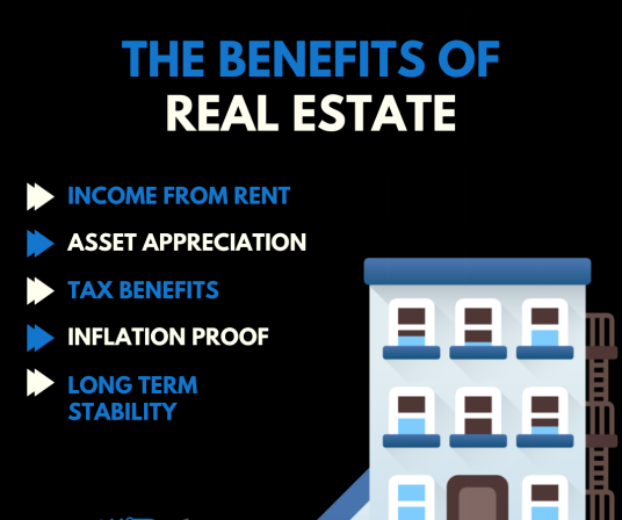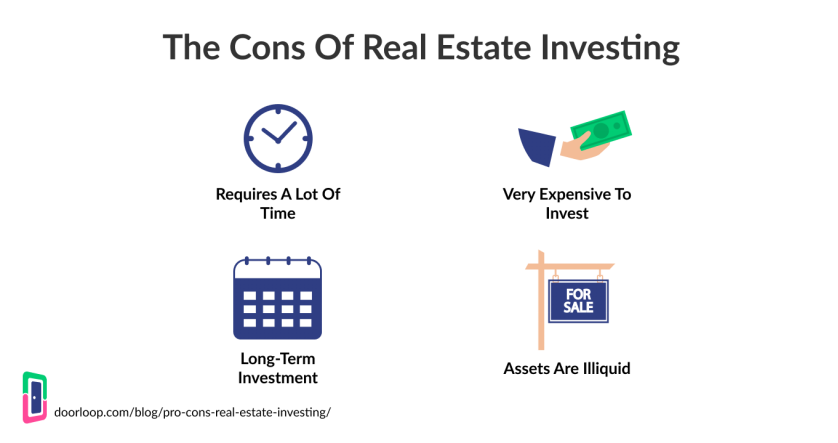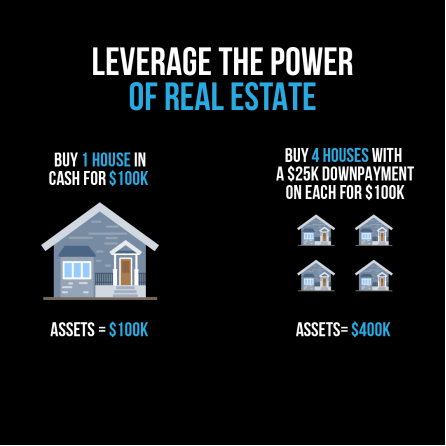Ventajas y desventajas de la inversión inmobiliaria
Objetivos clave de aprendizaje:
Introducción: In this section, we’ll unravel the intricate web of real estate investing. From the notable advantages that draw investors worldwide to the potential pitfalls that need cautious navigation, this segment aims to offer a comprehensive overview. By shedding light on some prevailing misconceptions, we ensure you step into the world of real estate with clarity and confidence.
- Discover the numerous advantages of real estate investing. Understand why it stands out against traditional investment avenues like stocks and bonds, and how its tangible nature, consistent income stream, tax benefits, and appreciation potential could boost your investment portfolio.
- Recognize the challenges inherent in real estate investing. Gain insights into the management responsibilities, liquidity issues, and potential risks that come with the territory. This knowledge will prepare you to navigate potential roadblocks effectively.
- Demystify common misconceptions about real estate investing. Understand that it’s not just a playground for the affluent, and learn the true dynamics of risk, time commitment, and the diverse strategies available for every kind of investor.
Sección 3: Ventajas y desventajas de la inversión inmobiliaria
In this section, we’ll discuss the advantages and disadvantages of investing in real estate, helping you better understand the benefits and risks involved.

Cifra: This infographic outlines the key benefits of investing in real estate. It highlights income generation through rent, asset appreciation over time, tax benefits associated with property ownership, the inflation-proof nature of real estate investments, and the long-term stability they offer. This information is particularly useful for potential investors or property owners, providing insight into the various advantages real estate can offer as a financial asset.
Fuente: Infografía personalizada
A. Advantages of Investing in Real Estate

Título de la figura: Real Estate vs. Other Investments: Weighing the Benefits
Fuente: FortuneBuilders
Descripción: The figure contrasts the benefits of investing in real estate with other types of investments. An in-depth comparison of real estate investments with other types of investments such as stocks, bonds, gold, CDs, and mutual funds. It highlights the unique advantages of real estate, which include tax benefits, steady cash flow, a hedge against inflation, the ability to leverage funds, building equity, and the potential for appreciation.
Key Takeaways :
- Tangible Asset: Real estate stands out as a tangible, physical asset, offering a sense of security and direct control over the investment.
- Consistent Cash Flow: Rental properties in real estate can offer steady monthly income, unlike the fluctuating returns from stocks.
- Beneficios fiscales: Real estate investments come with certain tax advantages, including potential deductions and depreciation.
- Appreciation Potential: Over time, property values generally rise, making real estate a good avenue for long-term capital gains.
- Comparative Analysis: The image might highlight how real estate offers diversification for an investment portfolio, reducing risks compared to the volatile stock market.
Solicitud: The visualization of the benefits of real estate compared to other investment types is crucial for both novice and seasoned investors. It underscores the potential stability, consistent returns, and long-term appreciation that real estate can offer. Potential investors can use this information to make informed decisions about diversifying their portfolio, weighing the pros and cons of real estate against the inherent risks and rewards of other investment types.
- Apreciación: Real estate generally appreciates over time, allowing investors to build equity and potentially generate substantial profits when selling.
- Flujo de fondos: Real estate investments can provide steady, passive income through rental payments.
- Beneficios fiscales: Real estate investments offer various tax benefits, such as depreciation deductions.
- Inflation Hedge: Real estate investments can provide a hedge against inflation.
- Tangible Asset: Real estate is a tangible asset, offering investors more control.
- Diversificación: Real estate investments can help diversify an investor’s portfolio.
- Leverage: Real estate investments can be leveraged, allowing investors to control larger assets with smaller investments.
8. Multiple Exit Strategies: Real estate investments offer various exit strategies, including selling, refinancing, or passing the property down to heirs.
B. Disadvantages of Investing in Real Estate

Título de la figura: Cons of Real Estate Investing
Fuente: DoorLoop
Descripción:
This infographic outlines the potential drawbacks of investing in real estate, such as the significant initial capital requirement, the complexities of property management, the impact of market fluctuations, and the challenges of liquidity in real estate investments.
Conclusiones clave:
- High initial investment can be a barrier to entry for many potential investors.
- Property management requires time and expertise, which can be demanding for investors.
- Market volatility can affect property values and rental income unpredictably.
- Liquidity issues mean that real estate cannot be quickly converted to cash without a potential loss in value.
Solicitud: For individuals contemplating real estate investment, understanding both the pros and cons is essential. It allows them to assess the potential risks, returns, and responsibilities associated with real estate, ensuring they make informed decisions aligned with their financial goals, risk appetite, and investment horizon. Whether they choose to dive into real estate or seek other investment avenues, having a balanced view aids in crafting a more robust, diversified investment strategy.
- Liquidez: Real estate is not as easily bought or sold as other investments, such as stocks or bonds.
- High Initial Costs: Real estate investments typically require a significant initial capital outlay.
- Ongoing Expenses: Real estate investments come with ongoing expenses, such as property taxes, insurance, and maintenance costs.
- Market Fluctuations: Real estate values can be affected by local and global economic factors, potentially impacting investment returns.
- Management Responsibilities: Real estate investments often require active management, which can be time-consuming.
- Leverage Risks: Using leverage can magnify potential losses if property values decline.

Cifra: This infographic illustrates the concept of leveraging in real estate investments. It compares two scenarios: buying one house with a $25K down payment versus buying four houses with a $100K down payment. The graphic visually demonstrates how leveraging can increase assets from $100K to $400K, highlighting the potential for significant asset growth through strategic real estate investments. This information is particularly useful for investors looking to understand the power of leveraging in maximizing their real estate portfolio.
Fuente: Infografía personalizada
C. Common Misconceptions about Real Estate Investing

Título de la figura: Debunking Misconceptions: Myths vs. Facts
Fuente: iStock
- It’s only for the wealthy: Real estate investing can be accessible to people with varying levels of financial commitment.
- It’s too risky: Proper due diligence, research, and analysis can minimize risks associated with real estate investing.
- It requires a lot of time and effort: Streamlining processes and hiring professionals can make real estate investing more passive.
- It’s a get-rich-quick scheme: Real estate investing requires a long-term perspective and a sound investment strategy.
- You need to be a DIY expert: Hiring contractors and property managers can help with property repairs and maintenance.
- You need to have a lot of experience: Many successful investors start small and build their knowledge and expertise over time.
- It’s only about buying and flipping properties: There are multiple ways to invest in real estate, such as rental properties, REITs, and crowdfunding platforms.
Understanding the advantages, disadvantages, and common misconceptions of real estate investing will empower you to make informed decisions and build a successful real estate portfolio over time.
Conclusiones clave:
Frase de cierre: The realm of real estate investing, like any other, has its allure and challenges. As you glean insights from this section, you’re poised to make informed decisions, balancing the pros and cons, and charting a course aligned with your financial aspirations. The power of informed investment can’t be overstated, and this section equips you with just that.
- Advantages abound in real estate investing. Key benefits include its tangible nature, potential for consistent cash flow through rentals, attractive beneficios fiscales, and the likelihood of appreciation over time. Moreover, real estate offers diversification opportunities that can bolster an investment portfolio.
- Real estate’s challenges demand attention. Factors like illiquidity, significant initial costs, ongoing expenses, and potential market fluctuations are aspects that every investor needs to consider. Plus, there’s the responsibility of active management and the inherent risks if leveraging.
- Misconceptions about real estate can mislead potential investors. It’s essential to know that real estate investing isn’t exclusive to the wealthy, isn’t overly risky with the right diligence, doesn’t always demand intensive effort, and isn’t a mere get-rich-quick scheme. Multiple avenues exist within real estate, beyond just buying and flipping properties.
Visual aids in the form of figures and charts, such as those from FortuneBuilders, DoorLoop, and iStock, provide a lucid representation of the advantages, challenges, and misconceptions. They serve as excellent tools for both beginners and seasoned investors, ensuring clarity in understanding the dynamics of real estate investing.

